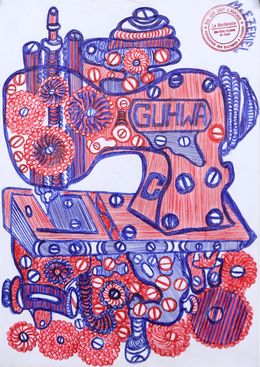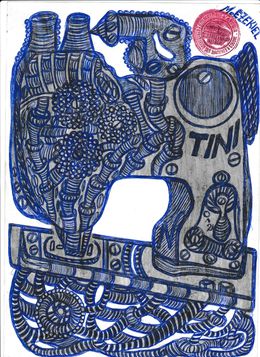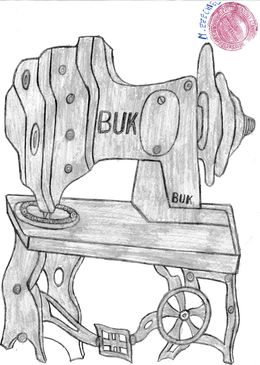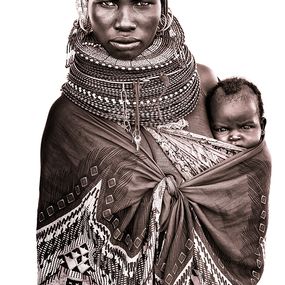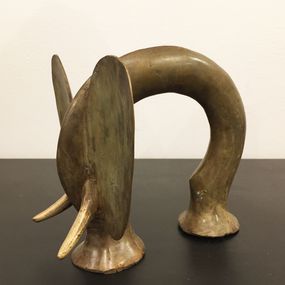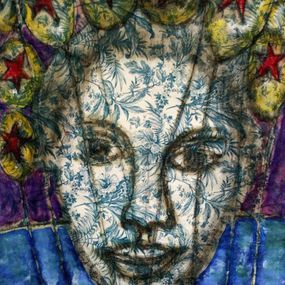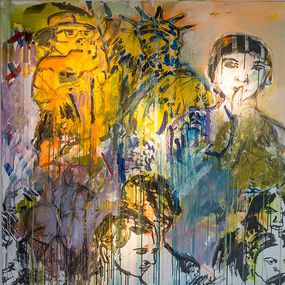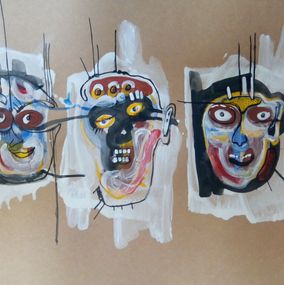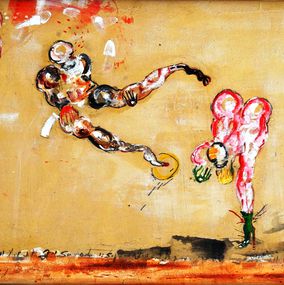
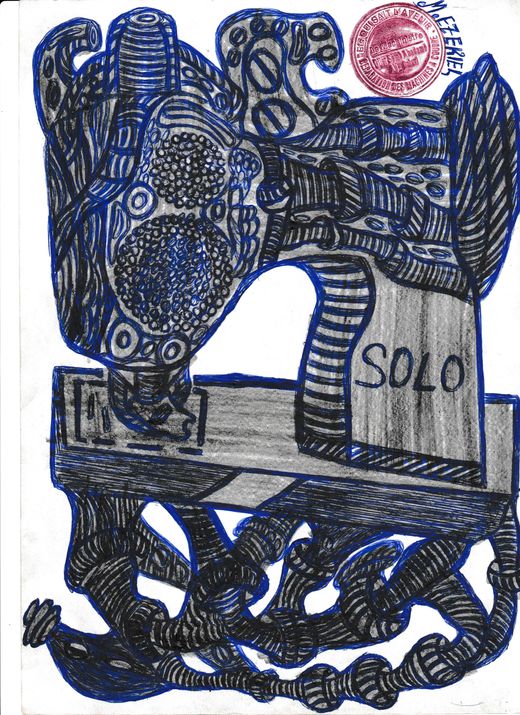
Biography
Inside his sewing machine repair workshop, out of sight, Ezekiel Messou fills school notebooks, A5 format, squared to the millimeter, in which he lists the models of sewing machines.
With a pencil sharpened with a cutter, he begins with a light line, almost a dotted line. Once the frame is sketched, the gesture is more supported. It draws more secure straights using a screwdriver or wrench as a ruler. He then fills in the surfaces, creating different shades of gray and writes the brand name of the sewing machine he is designing, or replaces it with his name or MJS initials.
In a final phase, he affixes the stamp of his establishment in red or blue ink: "Ets who knows the future * Repair of Sewing Machines * The Machinist". This stamp, says Ezekiel Messou, certifies that he is the author of the composition. It also works as a kind of copyright: “nobody can steal my drawings”.
Born in 1971, Ezekiel Messou is not a very diligent student. At the age of sixteen, he fled an authoritarian father and left for Nigeria. From 1990 to 1995, he learned the trade
?
sewing machine repairer in Lagos. His choice fell on the mechanics of sewing machines because, as he says, "there are too many fishermen, tailors or masons on the lake, while no one can do this job ..."
Today, Messou has two wives and ten children and runs his own sewing machine repair shop in Abomey-Calavi, prefecture in southern Benin. The Collection de l'Art Brut has three of its notebooks in which more than 130 sewing machines are represented; with or without crankset, serial number, logo, technical details, model name, etc.
Nationality
Categories
Artistic movements





